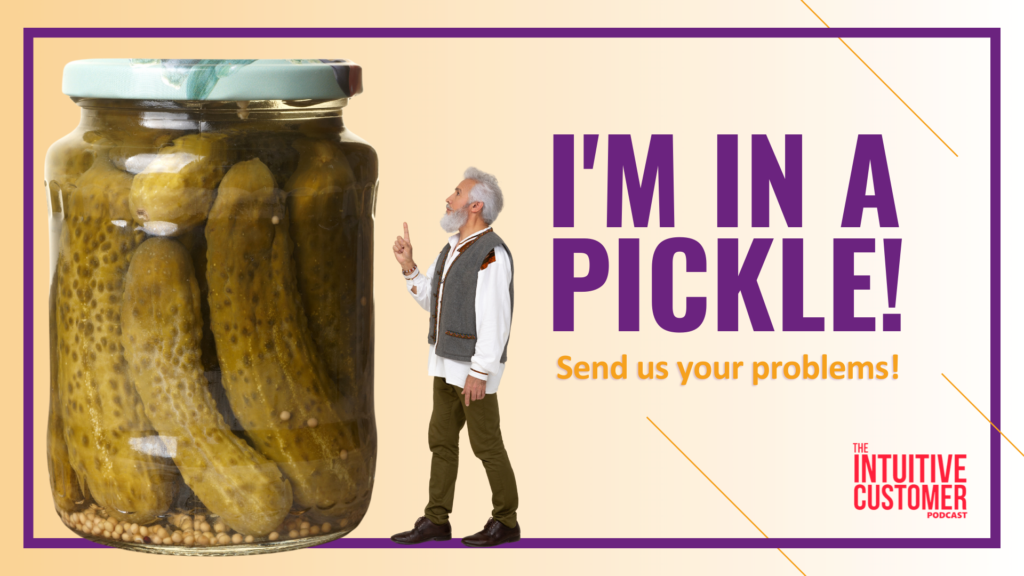Serendipity is a pleasant thing. The feeling that you have been lucky, that the gods are smiling upon you, that fate has dealt you a good hand, is a good one, bound to increase your happiness and satisfaction. It feels like magic.

What’s more is that research shows that using this simple formula can be magical for your Customer Experiences, too.
Kristina Durante, (@KristinaDurante) Ph.D., Professor of Marketing at Rutgers Business School, joined us to talk a bit about the magic of luck, one of her research areas. We extended the invitation after reading an article in Fast Company from last May about Durante’s latest research about the psychological effects of experiencing serendipity.
Durante’s interest in serendipity spawned out of a few influences. First, marketers bombard consumers with choices, stemming from the belief that people like to control things and choose for themselves. However, another reason was the change in her emotional reaction to an unplanned event vs. her deliberate choice.
The event in question was a radio station playing an old Madonna song on-air that Durante hadn’t heard for a while. In the car, she enjoyed hearing the music again after a long time (it was “Material Girl,” in case you were wondering), so she added it to her playlist. However, when she listened to it later at the gym, it didn’t have the same level of enjoyment as it had that day on the radio. Durante decided to research why.
The definition of Serendipity is “The faculty of phenomenon of finding valuable or agreeable things not sought for.” However, Durante has more nuance to add to it. Some people, like me, think of it as good luck. Others think of it as unexpectedness or surprise, while some define it as randomness. Durante believes it is all of these things, and each component in its combination makes it different from each of them alone. Moreover, the occurrence of serendipity boosts our enjoyment of something.

Durante’s research spanned a decade. The research team concluded that defining serendipity comes down to:
- It’s something positive.
- It happens unexpectedly.
- It’s attributed to chance.
Also, Durante says that serendipity increases how much people like an experience relative to the same experience without it. For example, have you ever found one of your favorite movies playing on tv, one that you might have a digital copy of to access from the same device but were excited it was playing? Did you ever then settle in and watch it on TV, even with the commercials, re-edited version “to fit this format” and with all the bad words bleeped out of it? That’s an example of serendipity increasing the enjoyment of the film.
Serendipity in Customer Experiences
You can manufacture these situations for the consumer as a marketer. For example, Netflix has introduced a Play Something feature, which finds you something to watch without having to scroll through a zillion options to pick something. Another offering is the clothing subscription boxes, like Birchbox for grooming supplies or Stitch Fix, which sends you pieces to add to your wardrobe without choosing one specifically. Durante and the team found that consumers with the choices sent to them enjoyed their boxes more than consumers who chose all the products or clothing for themselves.
However, the concept of serendipity is challenging as a marketer. On the one hand, it creates a paradox because people don’t want marketers or anybody else controlling their lives, so they want to be the ones to choose. On the other hand, however, consumers’ enjoyment improves when you take away the choice or conceal their influence in the selection.
Durante says that a way to think about creating serendipity is to remember that people like to get a pleasant surprise. Still, the kicker for improving enjoyment is that they cannot attribute how they got surprised. An example might be witnessing the Dapper Dans performing in Walt Disney World.
For most of us, barbershop quartet is not a category on our music streaming services. However, happening upon a performance of it at the park might have the right amount of unattributable surprise to make you a fan of the genre—for the few minutes you listen to it there, anyway.
 The first part of the recipe for serendipity is that it should be positive, and then it should feel like it happens by chance, meaning there is no obvious way to attribute the source of the positive experience.
The first part of the recipe for serendipity is that it should be positive, and then it should feel like it happens by chance, meaning there is no obvious way to attribute the source of the positive experience.
People want to feel lucky, or they want to think that somebody is smiling down at them.

Durante believes these feelings are what increase enjoyment during a serendipitous event. The fate or luck component was essential to improving enjoyment per the team’s research. It seems that the idea that fate smiled upon us that day feels good.
So, What Can You Do to Increase Serendipity in Customer Experiences?
It would be best to design some serendipity into experiences. However, every organization doesn’t have access to Dapper Dans to light up customers’ day. Durante has a few suggestions:
- Add in unplanned experiences. For example, when customers unexpectedly receive product samples in the mail, it is a pleasant surprise attributed to chance.
- Think of serendipity as a continuum. You want to do what you can, even incrementally, to increase the appearance of luck or good fortune into experiences as you can. More than one can increase enjoyment exponentially.
- Avoid the appearance of targeting. Even though you control these unexpected and unplanned experiences, it is essential to keep customers feeling lucky and not like you are manipulating them. The positive satisfaction drains quickly once a customer can attribute their good fortune to marketing.
I believe data will facilitate this type of designed surprise, too. The more you know about your customers’ behavior, the easier it will be to help introduce unexpected, unplanned, and unattributed surprises that will delight customers. Twenty years ago, creating predictably pleasant surprises might have been more challenging. However, the more data we have on customers and the more we can apply behavioral science concepts, the more predictable that outcome will become.
I always say that people don’t always know what will make them happy, or they’re unable to articulate what will. Customers would say they want more choices and control if you ask them. However, Durante’s serendipity research shows that what might make them happy is a surprise they can’t attribute to any source in particular. Can you imagine any customer ever saying that in a survey? Me either.
So, if it takes the idea that they are on the receiving end of serendipity, then, by all means find ways to make your customers feel lucky without them knowing you had a hand in it. They will have more positive feelings toward your company, and you might have more positive numbers for your bottom line.
If you have a business problem that you would like some help with, contact me on LinkedIn or submit your pickle here. We would be glad to hear from you and help you with your challenges.
 There you have it. No promotions, no gimmicks, just good information.
There you have it. No promotions, no gimmicks, just good information.
Think reading is for chumps? Try my podcast, The Intuitive Customer instead. We explore the many reasons why customers do what they do—and what you should do about it. Subscribe today right here.


